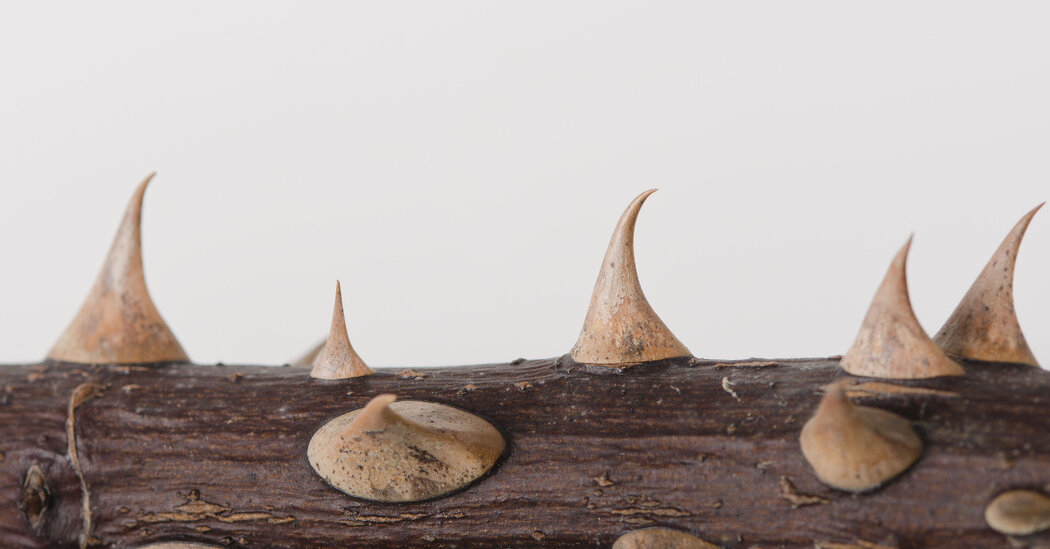There is no rose without thorns, the old saying goes. But to botanists, there is no rose with thorns: The spiky outgrowths of a rose stem are called “prickles,” and are biologically distinct from the stiff, woody thorns of other plants.
Prickles are a remarkable example of evolution repeating itself. In the past 400 million years, plants evolved them 28 different times. Roses grow prickles on their stems, whereas others grow them on their leaves or their fruits. Grasses grow tiny prickles on their flowering tufts. Solanum atropurpureum, a wild relative of potatoes that grows in Brazil, has prickles so nasty that they’ve earned it two fearsome nicknames: “Purple devil” and “Malevolence.”
A new study published on Thursday in Science sheds some light on how plants evolved prickles from scratch so many times: Over and over again, each species took advantage of a single gene. The discovery opens up the possibility of altering the DNA of plants to remove their prickles, making some wild plants easier to grow as crops.
Zachary Lippman, a plant geneticist at Cold Spring Harbor Laboratory, got curious about prickles as he studied a group of crops that includes potatoes, tomatoes and eggplants. While the crops are all prickle-free, some of their wild relatives are covered in the little daggers. Early farmers must have bred the prickles out of the wild plants as they started using them for crops.
“Who wants to cultivate eggplants that you can eat if there are these prickles poking you all the time?” he asked.
The loss of prickles led Dr. Lippman and his colleagues to wonder how the spikes had evolved in the first place. It’s likely that prickles arose in many plants as a defense against animals that would devour them. But prickles can serve other purposes, too. Some plants use them to hook onto surfaces while climbing. Some wild grasses use them to hook their seeds onto the fur of passing animals.
